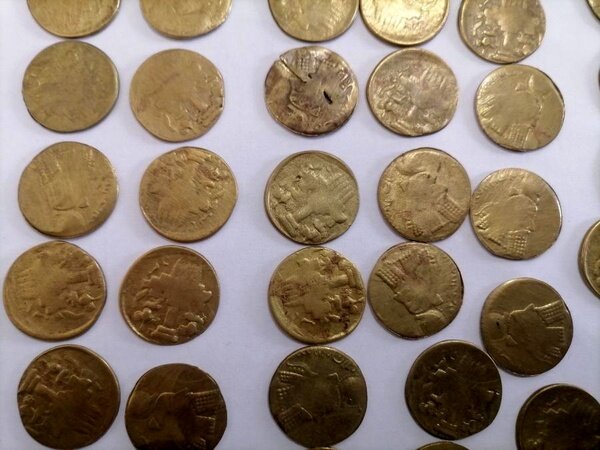Police recover ancient objects, coins in southwest Iran

TEHRAN – Police forces in charge of protecting cultural heritage have recently recovered 78 ancient objects and coins from the home of a suspect in southwest Iran.
“In this operation, 78 objects, comprising 62 coins and other relics made of metal and stone were seized,” a local police commander in charge of protecting cultural heritage said on Sunday.
The illegally-kept objects were found when policemen searched the house of a suspect in Ramshir county of Khuzestan province, the report said.
The suspect was surrendered to the judicial system for further investigation and trial, the commander added.
About 220 CE the Sasanian dynasty of Iran introduced the concept of thin flan coins. The Muslim conquest of Persia, also known as the Arab conquest of Iran, led to the fall of the Sasanian Empire of Iran (Persia) in ca. 651 and the eventual decline of the Zoroastrian religion. The rise of Muslims coincided with an unprecedented political, social, economic, and military weakness in Persia.
The conquering Muslims at first mimicked the coinage of their predecessors. In the western provinces, they issued gold and copper pieces imitated from contemporary Byzantine coins, modifying the cross on the reverse of the latter somewhat to suit Muslim sensibilities. In the eastern provinces, the Arab governors issued silver dirhams that were copies of late Sasanian coins (mostly of those of Khosrow II; with the addition of short Arabic inscriptions on the margin and often the name of the Arab governor in Pahlavi; even the crude representation of the fire altar was retained.
Situated at the head of the Persian Gulf and bordering Iraq on the west, Khuzestan was settled about 6000 BC by a people with affinities to the Sumerians, who came from the Zagros Mountains region. Urban centers appeared there nearly contemporaneously with the first cities in Mesopotamia in the 4th millennium. Khuzestan, according to Encyclopedia Britannica, came to constitute the heart of the Elamite kingdom, with Susa as its capital.
The culturally-rich province is home to three UNESCO World Heritage sites of Susa, Tchogha Zanbil, and Shushtar Historical Hydraulic System yet it is a region of raw beauty where its visitors could spend weeks exploring. The province is also a cradle for handicrafts and arts whose crafters inherited from their preceding generations.
AM
Leave a Comment